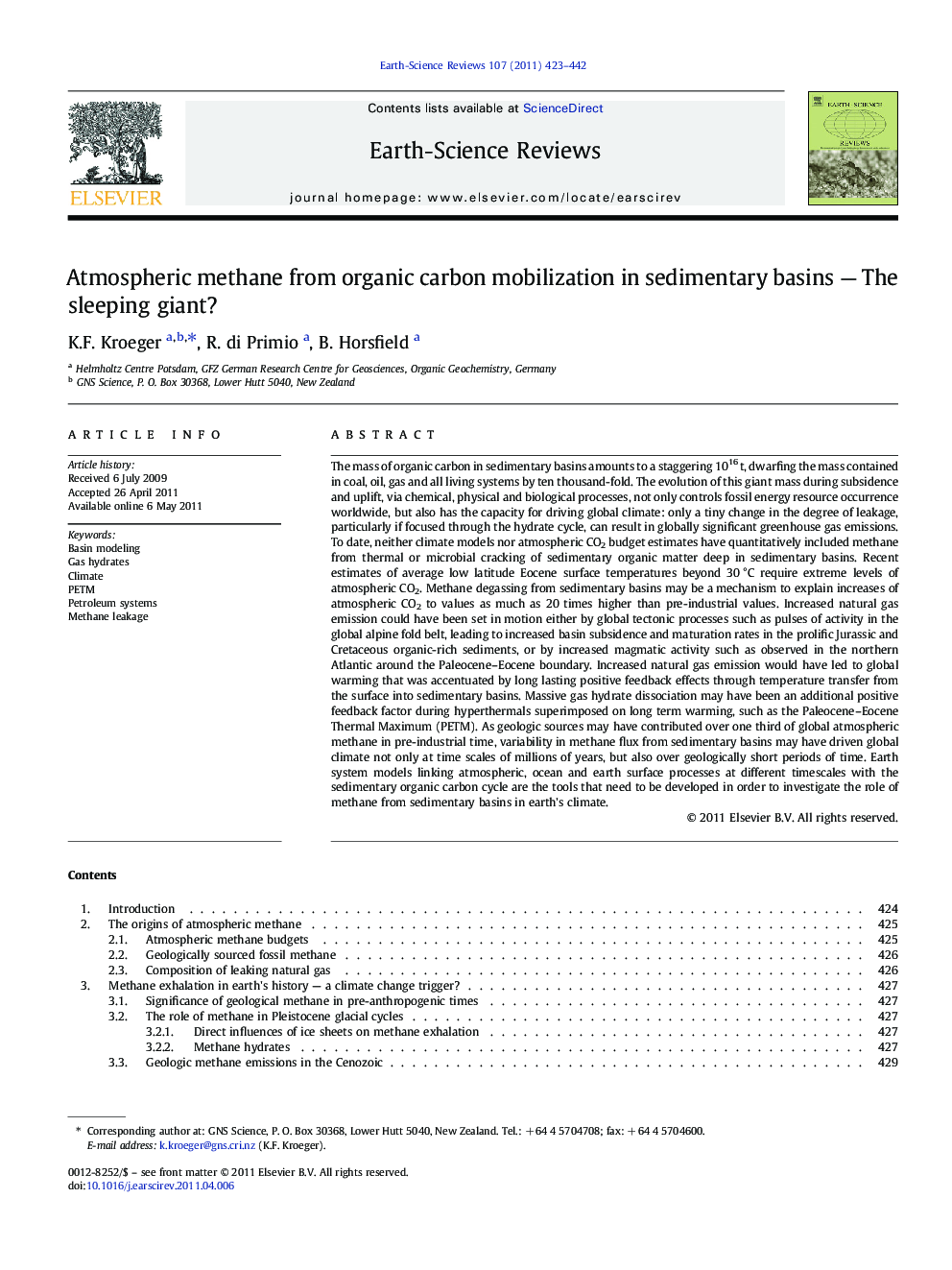| کد مقاله | کد نشریه | سال انتشار | مقاله انگلیسی | نسخه تمام متن |
|---|---|---|---|---|
| 4726039 | 1640001 | 2011 | 20 صفحه PDF | دانلود رایگان |

The mass of organic carbon in sedimentary basins amounts to a staggering 1016 t, dwarfing the mass contained in coal, oil, gas and all living systems by ten thousand-fold. The evolution of this giant mass during subsidence and uplift, via chemical, physical and biological processes, not only controls fossil energy resource occurrence worldwide, but also has the capacity for driving global climate: only a tiny change in the degree of leakage, particularly if focused through the hydrate cycle, can result in globally significant greenhouse gas emissions.To date, neither climate models nor atmospheric CO2 budget estimates have quantitatively included methane from thermal or microbial cracking of sedimentary organic matter deep in sedimentary basins. Recent estimates of average low latitude Eocene surface temperatures beyond 30 °C require extreme levels of atmospheric CO2. Methane degassing from sedimentary basins may be a mechanism to explain increases of atmospheric CO2 to values as much as 20 times higher than pre-industrial values. Increased natural gas emission could have been set in motion either by global tectonic processes such as pulses of activity in the global alpine fold belt, leading to increased basin subsidence and maturation rates in the prolific Jurassic and Cretaceous organic-rich sediments, or by increased magmatic activity such as observed in the northern Atlantic around the Paleocene–Eocene boundary. Increased natural gas emission would have led to global warming that was accentuated by long lasting positive feedback effects through temperature transfer from the surface into sedimentary basins. Massive gas hydrate dissociation may have been an additional positive feedback factor during hyperthermals superimposed on long term warming, such as the Paleocene–Eocene Thermal Maximum (PETM). As geologic sources may have contributed over one third of global atmospheric methane in pre-industrial time, variability in methane flux from sedimentary basins may have driven global climate not only at time scales of millions of years, but also over geologically short periods of time. Earth system models linking atmospheric, ocean and earth surface processes at different timescales with the sedimentary organic carbon cycle are the tools that need to be developed in order to investigate the role of methane from sedimentary basins in earth's climate.
Research Highlights
► Mobilization of a fraction of the 15,000,000 Gt of organic carbon in sedimentary basins could drive global climate.
► A large part of methane leakage to the atmosphere is related to thermal cracking of buried organic matter.
► Late Paleocene/Early Eocene warm climate was potentially related to global increase in burial rates of rich Jurassic -Cretaceous source rocks.
► Integration of variable time scale models is required to investigate the impact of methane leakage from sedimentary basins.
Journal: Earth-Science Reviews - Volume 107, Issues 3–4, August 2011, Pages 423–442